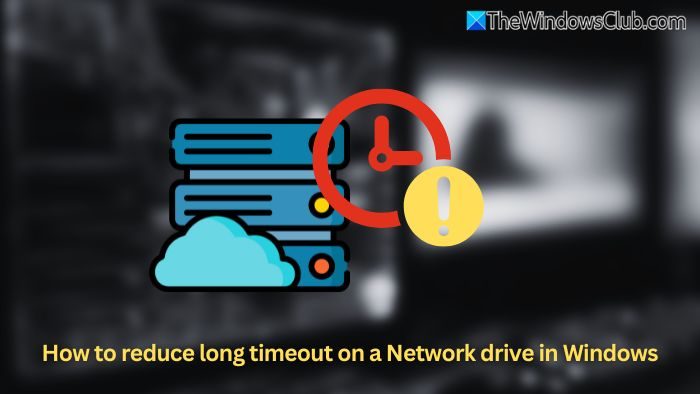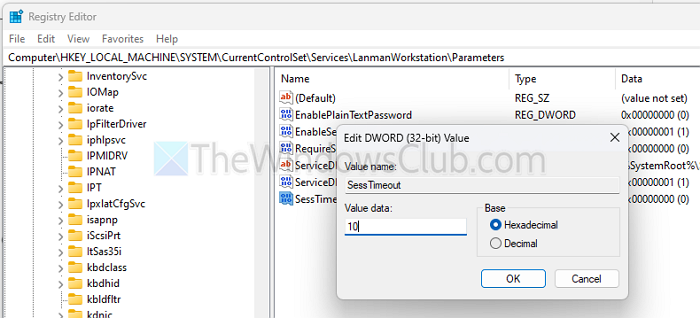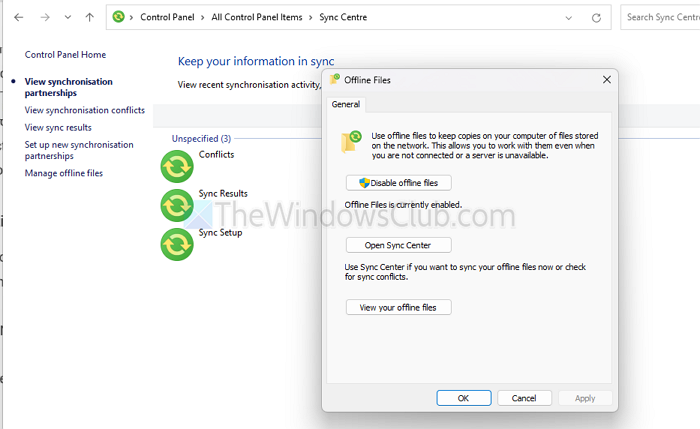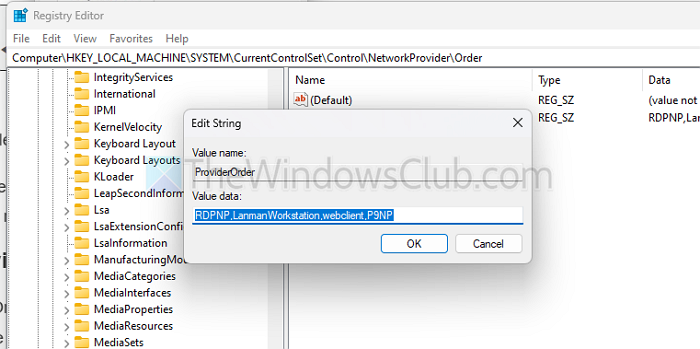At times, when you log in to your PC, you may get stuck, the screen may freeze, or the File Explorer may not work. If you are one of those using a Network drive and this happens to you, then here is how to reduce the long timeout on a Network drive on your Windows 11/10 computer.

How to reduce long timeout on a Network drive in Windows 11/10
Follow these solutions to reduce the long timeout on a network drive in Windows 11/10:
- Reduce SMB Connection Timeout
- Disable Offline Files
- Increase Network Provider priority
- Modify Group Policy for Mapped Drive processing
- Reduce Network Location Awareness Delay
- Disable Auto-Reconnect for Mapped Drives
1] Reduce SMB connection timeout

Windows defaults to a long SMB timeout. You can reduce it by adjusting the SessTimeout value in the registry.
Navigate to
KEY_LOCAL_MACHINE\SYSTEM\CurrentControlSet\Services\LanmanWorkstation\Parameters
Add or modify SessTimeout (DWORD) and set it to a lower value (e.g., 10 seconds instead of 45).
2] Disable offline files

If Windows is trying to sync offline files before connecting, it can cause delays:
- Open Control Panel > Sync Center > Manage offline files.
- Click Disable Offline Files and restart the system.
3] Increase Network Provider priority
If multiple network providers (e.g., OneDrive, third-party VPN clients) are involved, Windows may take longer to resolve the network drive.
Open the registry editor and go to:
HKEY_LOCAL_MACHINE\SYSTEM\CurrentControlSet\Control\NetworkProvider\Order
Modify ProviderOrder and make sure LanmanWorkstation (SMB) is listed first.
4] Modify Group Policy for Mapped Drive Processing

If the delay happens at login, Windows may be waiting for network connections:
- Open gpedit.msc and navigate to Computer Configuration > Administrative Templates > System > Logon.
- Enable Always wait for the network at computer startup and logon.
This forces Windows to establish the network before processing drive mappings, reducing timeouts.
Read: How to clear Mapped Network Drive Cache
5] Reduce Network Location Awareness Delay

Windows runs a background service to detect network changes, which can slow reconnections:
Open Registry Editor and go to:
HKEY_LOCAL_MACHINE\SOFTWARE\Microsoft\Windows NT\CurrentVersion\NetworkList\Profiles
Find your network profile and set Category to 1 (Private) instead of 0 (Public).
6] Disable Auto-Reconnect for Mapped Drives
If you don’t need auto-reconnect, remove the reconnect flag:
Open Command Prompt or Windows Terminal as admin and run:net use * /persistent:no
Then, manually remap drives using:net use X: \\server\share /user:username /persistent:no
These solutions should help speed up network drive reconnections while reducing unnecessary delays.
Why does my network drive take longer to reconnect after waking from sleep?
Windows may delay reconnecting to network drives due to power-saving settings. Ensure that the network adapter is not set to power down in Device Manager > Network Adapter > Properties > Power Management.
Read: How to map a Drive using Group Policy Preferences
Can a VPN cause delays in accessing a network drive?
Yes, if a VPN changes your routing or DNS settings, it can slow down network drive resolution. Try disconnecting the VPN or adding the network share’s IP address to the host’s file for faster resolution.